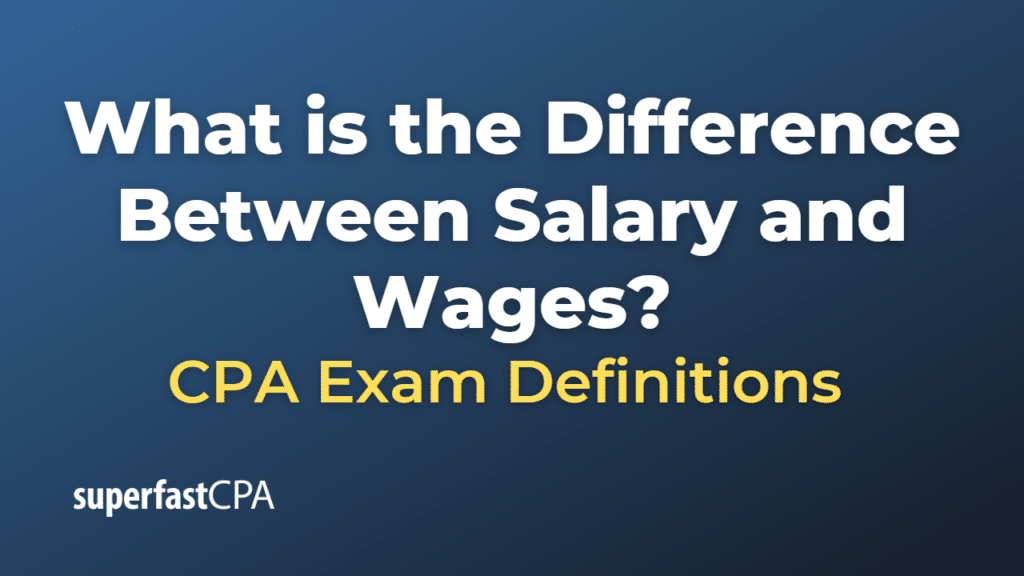Difference Between Salary and Wages
The terms “salary” and “wages” are both related to compensation for work, but they are typically used in different contexts and have different implications:
- Salary:
Salary refers to a fixed regular payment, usually paid on a monthly or bi-weekly basis, that does not vary with the number of hours worked or the quality or quantity of an employee’s output. Salary is often quoted on an annual basis (e.g., an employee might earn a salary of $60,000 per year).
Salaried employees are often full-time and may be expected to work a certain number of hours per week, but they receive the same amount of money regardless of whether they work more or less than these hours. They are often eligible for additional benefits, like paid vacation and sick leave. - Wages:
Wages, on the other hand, are typically based on the number of hours worked or the amount of output produced. Wages are often paid weekly, daily, or even hourly (e.g., an employee might earn $15 per hour).
Wage-earning employees, often referred to as hourly employees, earn more when they work more hours and may be eligible for overtime pay if they work beyond a certain number of hours in a week. However, if they work fewer hours, they will earn less.
In summary, the key difference between salary and wages is that salary is a fixed regular payment not directly tied to the number of hours worked, while wages are directly proportional to the number of hours worked or the amount of work done.
Example of the Difference Between Salary and Wages
Let’s take a look at hypothetical examples to illustrate the difference between salary and wages:
Example of Salary:
Jane is a software engineer at TechSoft Corp. She is a salaried employee and earns $80,000 per year. This amount is fixed and doesn’t change regardless of how many hours she works each week.
Even if she works more than the standard 40-hour workweek to finish a project or works less than 40 hours some other week, her annual salary remains the same. Also, she may receive benefits such as paid vacation, health insurance, and a retirement plan, which are often associated with salaried positions.
Example of Wages:
On the other hand, Tom works as a cashier at a local grocery store and is paid an hourly wage. He earns $15 per hour. If Tom works 30 hours in a week, he earns $450 (30 hours x $15/hour). If he works 40 hours the next week, he makes $600 (40 hours x $15/hour).
Additionally, if Tom works more than 40 hours in a week, he might be eligible for overtime pay. For instance, if he works 45 hours in a week, he might get 1.5 times his regular rate for the extra 5 hours, resulting in higher earnings that week. However, his earnings can also be lower if he works fewer hours.
In these examples, Jane’s salary is a fixed amount and not dependent on the number of hours worked, whereas Tom’s wages vary depending on how many hours he works each week.













